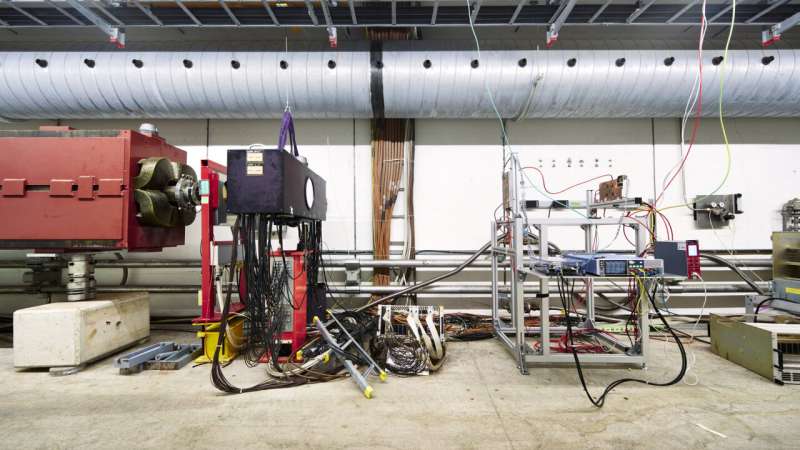This article has been reviewed according to Science X's editorial process and policies. Editors have highlighted the following attributes while ensuring the content's credibility:
fact-checked
peer-reviewed publication
trusted source
proofread
NA64 uses the high-energy SPS muon beam to search for dark matter

The NA64 experiment started operations at CERN's SPS North Area in 2016. Its aim is to search for unknown particles from a hypothetical "dark sector." For these searches, NA64 directs an electron beam onto a fixed target. Researchers then look for unknown dark sector particles produced by collisions between the beam's electrons and the target's atomic nuclei.
Recently, the NA64 team started using a muon beam from the SPS to search for new particles that interact predominantly with muons—heavier versions of the electron—and could explain simultaneously the long-standing puzzle of the muon's anomalous magnetic moment and the dark-matter (DM) problem. Their first results were accepted in the journal Physical Review Letters on 8 April.
In this paper, the NA64 collaboration sets new limits on the available parameter space—the window where the researchers could find a hypothetical dark boson Z' coupling only to muons and tauons for given values of its mass and coupling strength.
In the so-called vanilla model, the Z' can only decay back into neutrinos and could provide an explanation of the muon's anomalous magnetic moment puzzle. However, in extended models, it can also decay into DM candidates. This would solve the DM problem by predicting the observed relic density of DM particles created in the early universe.
With these results, the NA64 collaboration demonstrates the great potential of muon beams in dark matter searches and in future new physics scenarios preferably coupled to muons.
"Muons scattering off the nuclei in the target could produce a hypothetical dark boson Z', followed by its invisible decay into either a pair of neutrinos or a pair of dark-matter candidates, depending on the underlying model," explains the deputy Technical Coordinator Laura Molina Bueno. "The signature of this production would be missing energy and momentum in our detectors."
To search for this, a 160 GeV tertiary muon beam derived from the primary SPS proton beam is fired onto an electromagnetic calorimeter acting as an active target. The experimentalists then search for events in which one final-state muon has a momentum lower than 80 GeV with no detectable activity in the downstream calorimeters.
As no event matching these conditions was observed in the expected signal region, the researchers were able to exclude this region and conclude that, for the first model, the only possible mass window for a dark boson Z' to explain the g-2 muon anomaly is from 6 MeV up to 40 MeV.
Their results also indicate that light thermal dark matter coupled to the standard model via a (Lmu-Ltau) Z' cannot be heavier than 40 MeV.
NA64 is among the first experiments searching for dark sectors weakly coupled to muons. The experimentalists are confident that they will cover the available parameter space in the future by using higher beam intensities.
"Using a muon beam opens a new window to explore other well-motivated new physics scenarios, such as benchmark dark-photon models, scalar portals, millicharged particles or lepton-flavor violating processes," concludes NA64 co-Spokesperson Paolo Crivelli.
More information: Yu. M. Andreev et al, First results in the search for Dark Sectors at NA64 with the CERN SPS high energy muon beam, Physical Review Letters. journals.aps.org/prl/accepted/ … 8f384ef13a484c201843.
Yu. M. Andreev et al, Exploration of the Muon $g-2$ and Light Dark Matter explanations in NA64 with the CERN SPS high energy muon beam, arXiv (2024). DOI: 10.48550/arxiv.2401.01708
Journal information: Physical Review Letters , arXiv
Provided by CERN





















